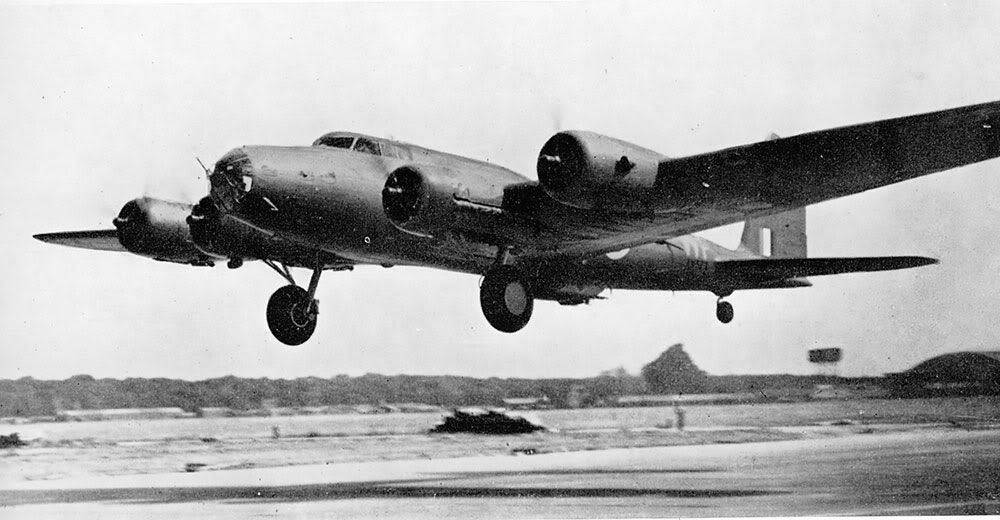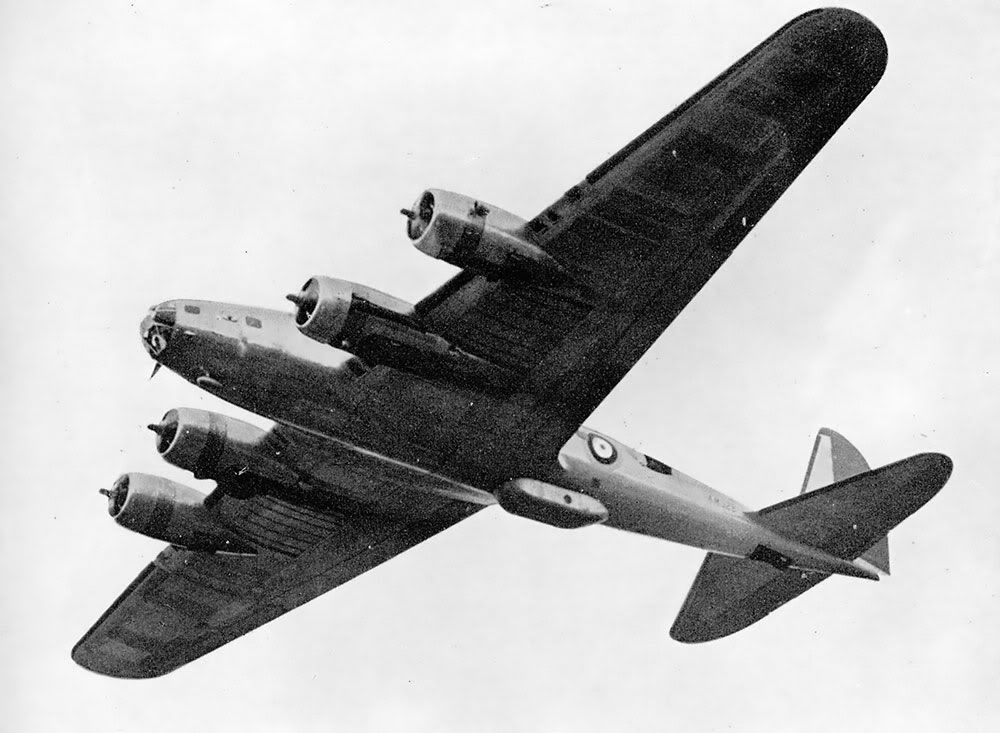Part 78.
4. Fortress Raider
Several other attacks were made in the course of the afternoon. A fortress aircraft reached Emden, and found fine weather over the target. Bombs were seen to burst in the target area, and smoke curled up from the ground far below. (Air Ministry Bulletin.)
I HAVE flown in the sub-stratosphere in a Fortress bomber over Holland, France, Norway and Germany. If the people on the ground in those countries have seen us at all, we have appeared no more than the tiniest dot in the sky. Their largest towns to us have seemed no bigger than a sardine tin laid flat on the perspex.
On your first ascent, you are very much aware of flying in unexplored space, relying completely on oxygen, but after a few trips you become accustomed to new colours in the sky; and when from one point, only a hundred miles from the English coast, you can see right across Denmark into the Baltic, and into Germany by Hamburg, and the whole plain of Holland is spread out in front of you, you do little more than note it in your log. To us who have carried out a good many attacks on the enemy, our Fortress seems no more difficult or less reliable than a good old Lysander at 1,000 feet. It's all a question of what you get used to.
Before coming to our attack on Emden last week-end, I should like to give you two instances of why we have learned to have this trust in the Fortresses. I was in the Fortress which was attacked by seven fighters when we were returning from Brest. Three minutes after our bombs had gone, the fire controller called out that there were seven enemy fighters coming up to us from the starboard quarter, 1,000 feet below. They closed in and there was almost no part of the Fortress which was not hit. Some of my friends in the crew were killed, others wounded. A petrol tank was punctured, bomb doors were thrown open, flaps were put out of action, tail tab shot away, tail wheel stuck half down, brakes not working, only one aileron any good and the rudder almost out of control. The centre of the fuselage had become a tangle of wires and broken cables, square feet of the wings had been shot away, and still the pilot managed to land the Fortress on a strange aerodrome. There is a testimony to the makers in America. Another time, when we were coming away from Oslo, part of the oxygen supply ceased and the pilot had to dive down swiftly through 19,000 feet. He pulled out and the Fortress landed safely at base. There is proof of the strength of the Fortress's construction.
Fortunately these thrills are rare. Our attack on Emden last week-end was almost without incident, except, of course, for the dropping of the bombs by the Sperry sight with beautiful accuracy on the target. It was, in fact, a typical Fortress raid. We lost sight of the aerodrome at 2,000 feet, and never saw ground again until we were off the Dutch islands. Foamy white cloud, like the froth on a huge tankard of beer, stretched all over England and for about thirty miles out to sea. The horizon turned�quite suddenly�from purple to green and from green to yellow. There was a haze over Germany, but I could see Emden fifty miles away. I called out to the pilot, in the sort of jargon that we use in the air, " Stand by for bombing, bomb-sight in detent, George in, O.K., I've got her." Then the pilot says to me," Let her go."
The drill is that I push a lever on my left for the bomb doors to open, and on a dial in my cabin two arms move out like the hands of a clock to show me the position of the bomb doors. On and around the Sperry sight there are eleven knobs, two levers and two switches to operate. On the bombing panel there are five switches and three levers to work and the automatic camera to start. I keep my eye down the sighting tube which, incidentally, contains twenty-six prisms, and with my wrist I work the release. As the cross-hairs centred over a shining pin-point in Emden on which the sun was glinting, the bombs went down. The pilot was told by means of an automatic light which flickered on as they dropped. We were still two miles away from Emden when we turned away. One of the gunners watched the burst. Almost a minute later he told us through the inter-com., "There you are, bursts in the centre of the something target," and back we came through those extra�ordinary tints of the sky.
Over England there was a strange scene that I have noticed before. The cloud formation exactly compared with the land below. Every bay and inlet was repeated in the strata-cumulus thousands of feet above, like a white canopy over the island. During the whole sortie I had only one thrilling moment. I saw a Messerschmitt coming towards us. He seemed an improved type, and I looked again. It was a mosquito which had got stuck on the perspex in the take-off and had frozen stiff. The windows usually are splashed with insect blood, but this fellow had seemed the right shape for a Hun. Otherwise it was an uneventful, typical trip in a Fortress, with the temperature at minus 30 degrees below zero Centigrade.
To add to the above account it is interesting to read the following about what we now call the Flying Fortress, printed in �The Royal Air Force In Pictures� published in September 1941:
THE BOEING FORTRESS
THE Boeing Fortress achieved lasting fame in the military aircraft class when, in the hands of Royal Air Force personnel, it introduced in the summer of 1941 the tactics of the sub-stratosphere attack. At the time it was the highest-flying heavy bomber in service in any air force in the world, and its service ceiling with full load of 36,700 feet put it outside the range of most enemy fighters within the time period available to them. Enemy aircraft such as the Messerschmitt I09F could climb higher than the Boeing, but during the climb the Boeing was often able to discharge its bombs on the targets and make good its return. Particularly satisfying as an aeroplane with a well-streamlined fuselage of circular section, the Boeing is powered with four Wright Cyclone engines each of 1,200 horse power, and each fitted with an exhaust-driven supercharger. In the working of these exhaust-driven superchargers lies the reason for the Fortress's specially well-developed high-flying qualities. Many of the early sorties of the Boeing Fortresses were made without a single interception by the enemy, but on August 16, 1941, when a raid was being made on Brest, a Fortress was attacked by seven enemy fighters, two Heinkel 113's and five Messerschmitt l09F's. The Fortress was damaged and three members of the crew severely wounded, but after twenty minutes' fighting it managed to shake off the enemy aircraft and to return to England.
The Fortress is a semi-monocoque structure with wings of aluminium alloy and stressed skin covering. Wing flaps and undercarriage retracting gear are electrically operated. The airscrews are Hamilton Standard Hydromatic full-feathering. The wing span is 103 feet 9 inches, and the length 67 feet 11 inches. The maximum gross weight is 47,500 lb. Top speed is 325 miles an hour and the maximum range 3,500 miles. At 25,000 feet the aircraft is still climbing at a rate not far short of 1,500 feet a minute. As the first specialised sub-stratosphere heavy bombing aircraft the Boeing Fortress takes its place in aviation history. It carries seven guns, some of heavy calibre. There are flank, nose and under-tail positions.


The pictures are from the same book and show the Fortress in RAF use.
All in all a harbinger of what was to come.